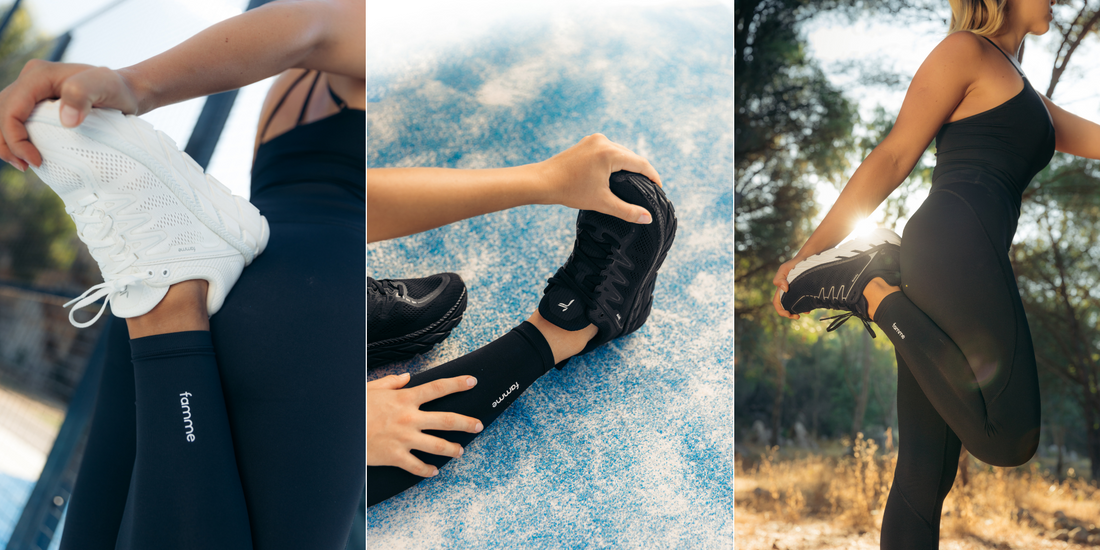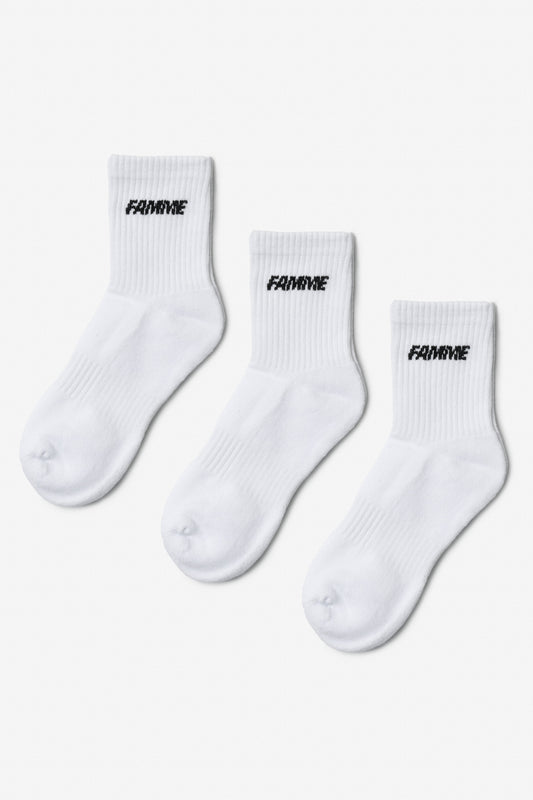
What is pronation, underpronation and overpronation?
Pronation
Our body has a system designed to absorb shock, and this is what we call pronation. It is a rolling movement that occurs when we put our foot down on the ground, and normally it starts on the outside of the heel before rolling forward towards the big toe. It is an important function in our body that helps distribute the load the foot is subjected to.
The fact that we overpronate or oversupinate is usually something we are born with, and it is important to remember that this is completely natural. For some reason, some people are born stronger in certain ways and areas than others, which can later lead to problems. A range of injuries can arise from wearing the wrong footwear for your type of pronation. One way to find out what suits you perfectly is by trying and walking in different shoes and feeling what is most comfortable for your feet.
Overpronation
With overpronation, you will notice that the inside of the foot at the ankle makes an excessive inward movement when the foot hits the ground during walking or running, but when you are sitting comfortably in a chair, the overpronated foot looks completely normal.
In other words, you only see a change in the foot when weight is applied, and the condition of the foot changes less when supported by, for example, soft surfaces like carpets. The problem caused by overpronation is the amount of time the foot remains in the pronation movement and how deep it goes; this prevents the foot from continuing the motion and recovering to supinate.
Every step you take with overpronation causes an imbalance in the body and leads to excessive wear on tendons, joints, muscles, and ligaments.
Typical symptoms you may experience with overpronated feet include:
- Plantar fasciitis / heel spur
- Achilles tendinitis
- Pain in the arch of the foot
- Back pain
- Shin splints
- Knee pain
We will explain later in the article how you can check at home if you possibly have overpronation in your foot.
Underpronation
With underpronation, your feet may be stiff and have a higher instep and arch. In some cases, only the heel and toes may come into contact with the ground. The load will then be exaggerated compared to those with a more normal pronation. This means that those with underpronated feet desperately need good shock absorption to avoid damage caused by overload.
The cause of supination in your feet is usually congenital, but it can also be caused by weakness in certain muscles in the foot, ankle, or leg – the weakness may result from:
- Incorrect footwear
- A misalignment in the body
- Or an injury to the foot that caused problems for muscles or tendons
An excessively supinated foot will not adapt well to the surface it walks on, so the muscles and bones around the foot must work harder to maintain balance. Over time, this will create tension in various parts of the body, including the calves, knees, hips, and back – leading to injuries. Simply put, it throws a wrench in the entire body's mechanics and will cause misalignments and injuries if the problem is not corrected.
Just like with overpronation, you can notice if you have this type of pronation when you put pressure on the foot. Unlike overpronation, those who underpronate will see the foot angle outward.
What you can do yourself:
- Use shoes that provide extra cushioning and possibly extra support in the longitudinal arch of your foot.
- Avoid high-heeled shoes and shoes with thin soles. If you have shoes with thin soles, buy insoles that can provide extra support.
- Avoid walking and running on hard surfaces like concrete floors, as the foot thrives better on soft surfaces. This helps stimulate the muscles and joint function of the foot. If you work in a hospital or similar setting with hard floors, invest in shoes with good cushioning to protect your heel from damage.
How to check it yourself
Guide for overpronation:
A quick and easy way to see if you overpronate is to look at the soles of the shoes you usually wear and see where the wear is greatest. If most of the wear is on the inside of the sole near the heel and big toe, there is a high likelihood that you overpronate. You may also notice your shoes leaning inward when placed on a flat surface.
The next step is to take off your socks and look at your feet barefoot. Do you have a low arch or flat feet? That can be another sign that you overpronate.
Those who overpronate also experience various symptoms;
- Heel or arch pain
- Flat feet
- Calluses
- Pain in the knee, hip, or back
- Hammer toe
Another clever way to check for overpronation is to look at the front of your lower leg. Follow the bone from the knee down to your ankle. If it tilts toward the inside of your foot, you may overpronate. Ideally, the bone should be aligned towards the little toe or the toe next to it.
Guide for underpronation:
You can use the following methods to examine at home if you have excessive supination, another term for underpronation, in your feet.
As with overpronation, check your shoes for wear patterns. Normal wear runs from the outside edge of the heel toward the center of the shoe. If your shoes show more wear on the outer edge of the sole, you may supinate.
Again, take off your socks and look at your feet barefoot. This time, wet your feet. Step with your full weight on a surface or material where your footprint is clearly visible; you can use brown or dark paper or similar to make the print visible.
If about half of your foot arch shows, you most likely have normal pronation. If little or no arch is visible, you probably have underpronation.
Running shoes and overpronation
Those with overpronation will prefer shoes that have good cushioning and support to counteract excessive load and prevent injuries. Our running shoes offer excellent cushioning and provide the support your feet need if you overpronate. Check out our running shoes here!
Would you like to read more about shoes suitable for training? Check out our article on how to find the right shoe!



